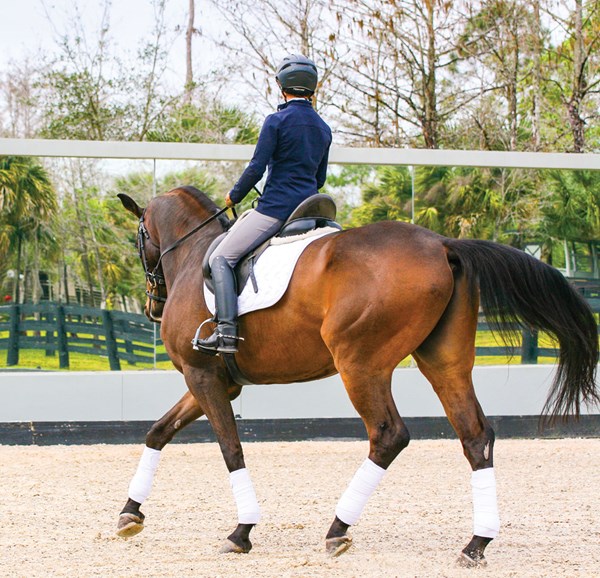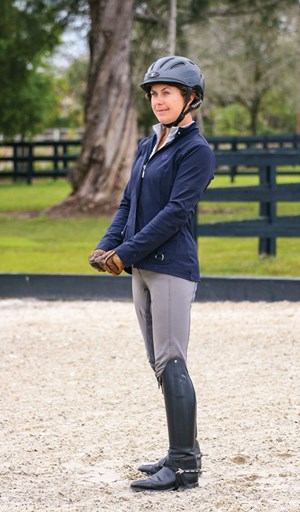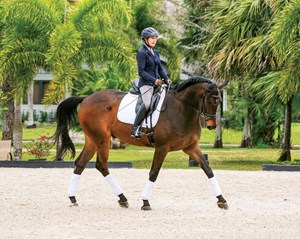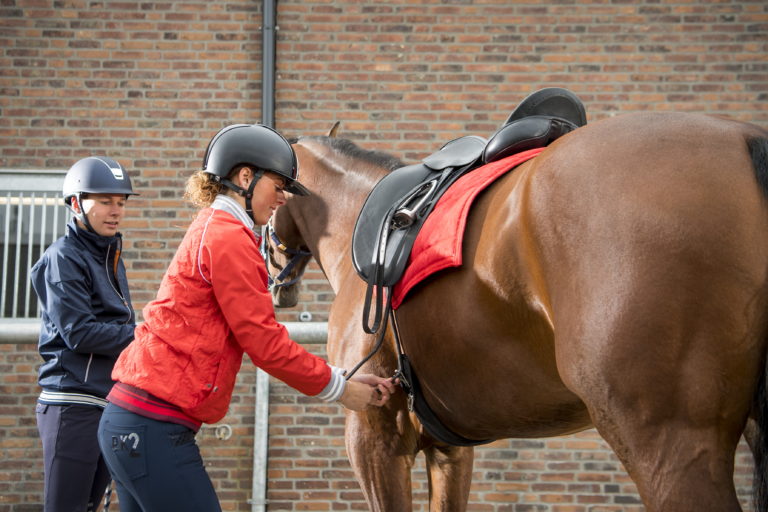Every rider I teach knows that I am a stickler about body alignment. By keeping your seat in the correct position, you allow the energy to flow through your legs in the right way and go to your hands in the right way. The horse is like a hose, and the energy is water. You don’t want a kink in the hose caused by the seat positioned incorrectly. You want the hose to be fully open so the energy can go from the hind legs through the seat and to the hand. The position of your seat and your hips allows this to happen.

The Pivoting Seat
If you begin with your seat perfectly even on a horse traveling along a straight line, you feel the even weight in both stirrups, both legs are stretching around the barrel of the horse and you have one hip, one shoulder and one hand symmetrically on each side. But what happens when you turn? Nine times out of 10, I see one of the rider’s shoulders move up and forward. To prevent that, make sure you are sitting down on both seat bones in the saddle equally, and imagine that there’s a rod along your spine between your hips and up to your head. To prevent yourself from collapsing one side or dropping one shoulder, keep your shoulders level and pivot them around the rod to the left or right. When you turn your shoulders, they stay perpendicular to that imaginary rod and your hips pivot slightly in the same direction so they are in the correct position. For example, if you are going to turn right, your right hip is going to open and your left hip is going to close toward the horse.
A ground exercise you can do to get the correct feeling is to stand with your feet shoulder-width part. Keep your spine straight and rotate your body left and right around the imaginary rod. Feel what your hips do as they open and close around an imaginary horse. When you turn your torso more to the right, that creates a closed door to the outside (left) and opens the inside (right) hip, letting the horse go through on your circle line. The hips swivel right a bit, not quite as much as the shoulders, and you feel the oblique muscles that line either side of the abdomen working.

When you get back on the horse, find the same feeling by riding on a 20-meter circle. Begin at the walk. Put your reins in the outside hand and place your inside arm behind your back so the back of your hand is on your outside hip or right behind the saddle on your lower back. You feel your outside shoulder come forward and your inside shoulder come back. Your outside hip closing is what turns the horse. The outside leg will go against the horse, and the inside leg from the hip to the knee will be on the horse with the inside hip open.
Home Base for the Hands
Think about what I like to call “home base” for the hands. Picture a square from the front of the saddle to the front of the withers that is even with your hips width-wise and height-wise. You want to keep your hands in that square. The image of the square helps you keep your hands in front of the saddle with the feeling that you are pushing a shopping cart forward rather than pulling one back. Think of that as your home base so your hands, no matter what, can stay within that area.
As you pivot off the rod from your hips to your head, the square will change slightly because of the direction of your hips. Your arms will move accordingly. When you are asking the horse for bend, your hands move very slightly to the inside in order to stay in that box as you move your body into position. If you forget about home base while bending the horse, it is easy to lose the connection to the outside rein because your hand goes up or out. Make sure that in everything you do, your hands can stay in the box.
Once you have mastered this seat position, try riding a leg yield on the circle. Begin on an 18-meter circle left with your seat in the correct turning position. Use your inside leg to leg-yield out to a 20-meter circle. From the inside leg, you connect your horse to the outside rein, and with practice you will feel the horse truly go between both legs and both reins on the bending line.

Melissa Allen is a USDF Certified Trainer through FEI and a USDF gold, silver and bronze medalist. She trains out of Willow Creek Sport Horses in Raymore, Missouri.











